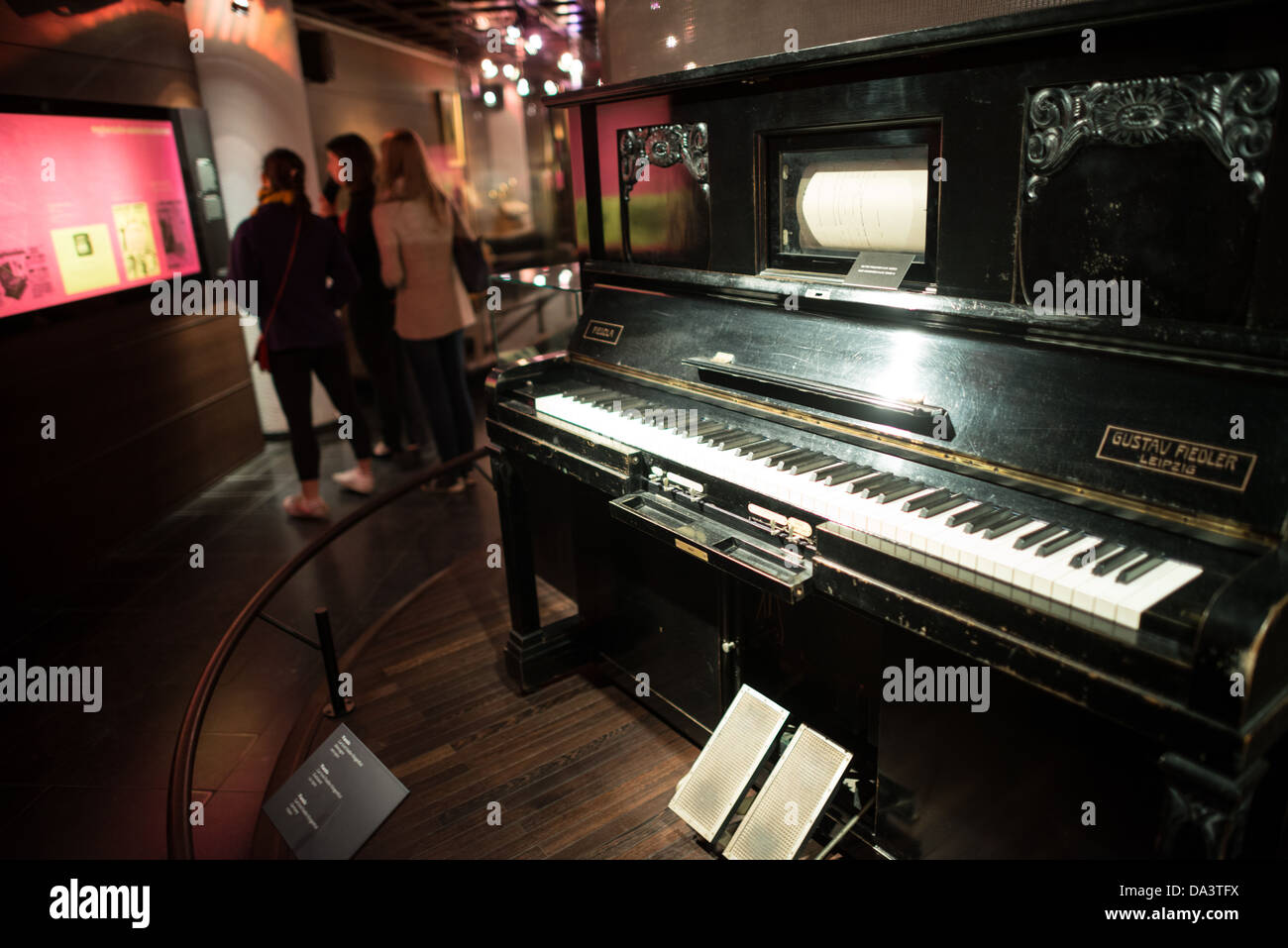BRUSSELS, Belgium — A pianola built in 1900 on display at the Musical Instrument Museum in Brussels. This self-playing piano represents early 20th-century musical technology and entertainment. The Musee des Instruments de Musique (Musical Instrument Museum) in Brussels contains exhibits containing more than 2000 musical instruments. Displays include historical, exotic, and traditional cultural instruments from around the world. Visitors to the museum are given handheld audio guides that play musical demonstrations of many of the instruments. The museum is housed in the distinctive Old England

Image details
Contributor:
David Coleman | Have Camera Will Travel / Alamy Stock PhotoImage ID:
DA3TFXFile size:
85.9 MB (2.7 MB Compressed download)Releases:
Model - no | Property - noDo I need a release?Dimensions:
6706 x 4476 px | 56.8 x 37.9 cm | 22.4 x 14.9 inches | 300dpiDate taken:
26 May 2013Location:
Musee des Instruments de Musique, Brussels, Brussels Region, BelgiumMore information:
Photograph by David Coleman. The pianola on display at the Musical Instrument Museum in Brussels is a remarkable example of early 20th-century musical technology. Built in 1900, this self-playing piano represents a significant innovation in home entertainment from the turn of the century. Pianolas, also known as player pianos, operate by using a pneumatic mechanism to "read" perforated paper rolls, automatically playing pre-programmed music without the need for a skilled pianist. This particular instrument, dating from 1900, showcases the craftsmanship and engineering of the era, bridging the gap between traditional musical instruments and the advent of recorded music. The pianola's presence in the museum highlights its importance in musical history, serving as a precursor to modern digital pianos and home entertainment systems. The Musical Instrument Museum, housed in the former Old England department store, is renowned for its vast collection of over 7, 000 instruments from around the world. This pianola is part of a broader exhibit that traces the evolution of musical instruments and technologies throughout history. Its preservation allows visitors to experience the sounds and mechanics of early 20th-century musical entertainment, providing insight into the social and cultural aspects of music consumption in the Victorian and Edwardian eras.